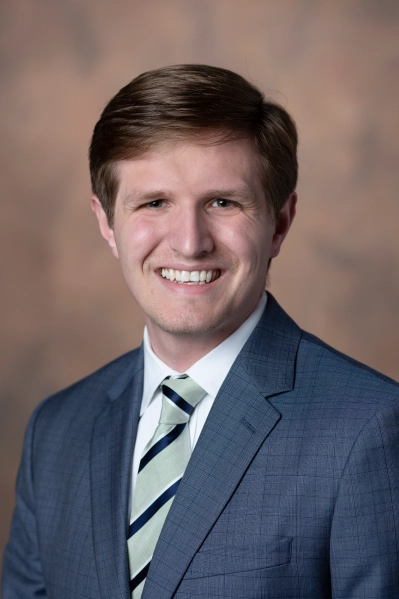By Brandyn F. Churchill
The 2024 ASSA Annual Meeting included an ASHEcon sponsored session on Hospital Mergers, Markups, and Executive Compensation chaired by Dereck Jenkins (Rice University). The session included presentations by Stuart Craig (University of Wisconsin-Madison), Sebastian Fleitas (Pontifical Catholic University of Chile), and Vivian Ho (Rice University), as well as discussions by Haizhen Lin (Indiana University), Devesh Raval (Federal Trade Commission), and Mireille Jacobson (University of Southern California). A summary of these presentations and their discussions are included below. As a reminder, the results in these presentations are preliminary.
In “How Does Rising Health Care Spending in the U.S. Impact Labor Markets and Mortality? Evidence from Hospital Mergers,” Stuart Craig and his team (Zarek C. Brot-Goldberg, Zack Cooper, Lev Klarnet, and Ithai Lurie) use an impressive amount of administrative data to trace out the effects of increased health care spending. After first reminding the audience that the estimates are preliminary and do not reflect the views of the U.S. Department Treasury, Craig detailed the rapid increase in U.S. hospital prices over the last decade. Notably, wages grew at a considerably lower rate over this same period. Given the prevalence of employer-sponsored health insurance, Craig noted that some have speculated that rising health insurance premiums have suppressed wage growth. To test this hypothesis, Craig and his coauthors utilize price increases generated by horizontal hospital mergers as an instrument for local health care spending.
In the paper, Craig and his team find that an average hospital merger raises prices by 1.6 percent, which is entirely passed through to higher healthcare spending and higher insurance premiums. While they do not find any evidence that mergers affect healthcare quality, they do find that increased healthcare spending lowers employment, increases take-up of unemployment insurance, and lowers federal income tax receipts. Overall, Craig and his team conclude that workers pay for merger-driven price increases through extensive-margin labor market changes. Importantly, they then show that these labor market changes result in mortality increases, with 1 additional death per 173 labor market separations. In her discussion of the paper, Haizhen Lin questioned whether certain mergers might be better or worse than others and wondered whether these results might help regulators identify mergers most likely to generate adverse results.
Next, Sebastian Fleitas presented his work, “Markups and Mergers in the U.S. Hospital Industry.” In the paper, Fleitas and his coauthor (Jan De Loecker) use a production approach to study the extent of markups in the hospital industry from 1996 to 2018. By assuming that a production function exists that includes fixed and variable inputs to produce a quality-adjusted unit of care, the authors argue that hospitals are performing a cost-minimization problem, allowing markups to be written as the product of the output elasticity and the inverse of the revenue share. While this latter piece is observed in the data, Fleitas and his coauthor obtain the former term by adopting a cost-share approach and estimating the elasticity as the median of the expenditure of the variable input divided by total cost. Regardless of the variable inputs used in their analysis, Fleitas and his coauthor find that markups have increased 15 to 40 percentage points over time.
Fleitas then discussed the degree to which these markups may be attributable to increasing market power, noting that there were more than 1500 mergers over the last twenty-five years. While the authors do find a strong association between mergers and markups at the market level, Fleitas pointed out that mergers on average explained approximately 3 of the 15-percentage point increase in markups. As such, identifying the determinants of the remaining 12-percentage point increase remains an important open question. In his discussion, Devesh Raval – whose views do not necessarily reflect those of the Federal Trade Commission or its Commissioners – questioned where the markups were going to at non-profit hospitals. While they are not distributed to shareholders, Raval questioned whether these markups might be used to fuel administrative bloat.
In the final paper, “The Determinants of Non-Profit Hospital Executives’ Compensation,” Vivian Ho presented joint work exploring the determinants of hospital CEO compensation. Noting that the wage gap between not-for-profit hospital CEOs and registered nurses increased from 23 to 1 in 2005 to 44 to 1 in 2015, Ho argued that understanding the drivers of CEO compensation can help researchers understand why CEOs allocate hospital resources in particular ways. To help answer this question, Ho and her coauthors (Derek Jenkins and Marah Short) use Candid data from 2012 to 2019 drawn from IRS 990 Schedule H forms. After merging these compensation data with financial and community benefit data in the National Academy for State Health Policy Hospital Cost Tool, as well as data from the Medicare Hospital Compare dataset, the authors perform a Kitagawa-Oaxaca-Blinder decomposition on profit, charity care, readmissions, and bed size. The authors find that over time there has been an increase in compensation for running a larger hospital system, an increase in the size of hospital systems, and a reduction in the penalty associated with higher readmission rates. In discussing the policy implications of their results, Ho urged the Internal Revenue Service to strengthen its reporting requirements for identifying hospital CEOs and the components of executive pay so that future researchers can more easily study these issues. She also pointed to recent efforts by advocacy groups seeking to cap executive salaries or remove certain non-profit hospitals’ tax-exempt status. Drawing on this latter point for her discussion, Mireille Jacobson suggested that these efforts to cap CEO pay might be helpful for identifying whether high CEO pay is a cause or consequence of rising health care costs. She also questioned whether the outside options available to non-profit CEOs have changed over time.

